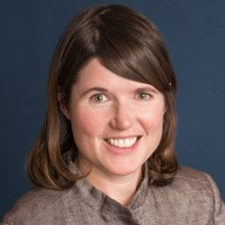Danielle Levac, P.T., Ph.D.
Assistant Professor of Physical Therapy, Movement and Rehabilitation Sciences
Northeastern University

Assistant Professor of Physical Therapy, Movement and Rehabilitation Sciences
Northeastern University
Key Words: Cerebral Palsy, Virtual reality, Active video games, Motor learning, Transfer, Rehabilitation, Physical Therapy
Cerebral palsy (CP), the most common cause of pediatric disability, limits functional independence and requires long-term participation in rehabilitation. Therapists require interventions that engage children in the repetitive practice required to learn new motor skills and that promote transfer of learning from therapy to real-life contexts. Children with CP demonstrate slow, error-prone learning. As such, therapists use motion-controlled virtual reality games because their engaging, feedback-rich virtual environments may motivate children to practice frequently. Practice in a virtual environment can improve motor skills to a greater extent than a comparable amount of conventional practice. Yet a major limitation preventing optimal benefit from this approach is the lack of evidence for transfer of performance improvements to the real world. Identifying the mechanisms underlying transfer from virtual environments to real-life skills is therefore critical.
We hypothesize that transfer from virtual environments is enhanced when therapeutic practice conditions are task-specific, i.e., similar to performance conditions in real life. We will compare how children with CP learn the same new task in 3 environments with differing task-specificity: a physical environment, a two-dimensional (2D; flat screen display) virtual environment, and a 3D virtual environment (head mounted display). We will measure how their movements change as they acquire the skill, because we hypothesize that the amount of movement variability during learning differs in each environment, and that environments eliciting more functional variability enhance transfer. We will then measure how well children’s learning transfers from each environment to a new, unpracticed real-life task. This research is significant because it will provide proof of principle for modifiable mechanistic targets to enhance how established (2D) and emerging (3D) virtual environments improve functional outcomes for children with CP. This will inform a long-term research program to develop and test task-specific virtual environments designed to enhance functional variability and promote real-life skill.